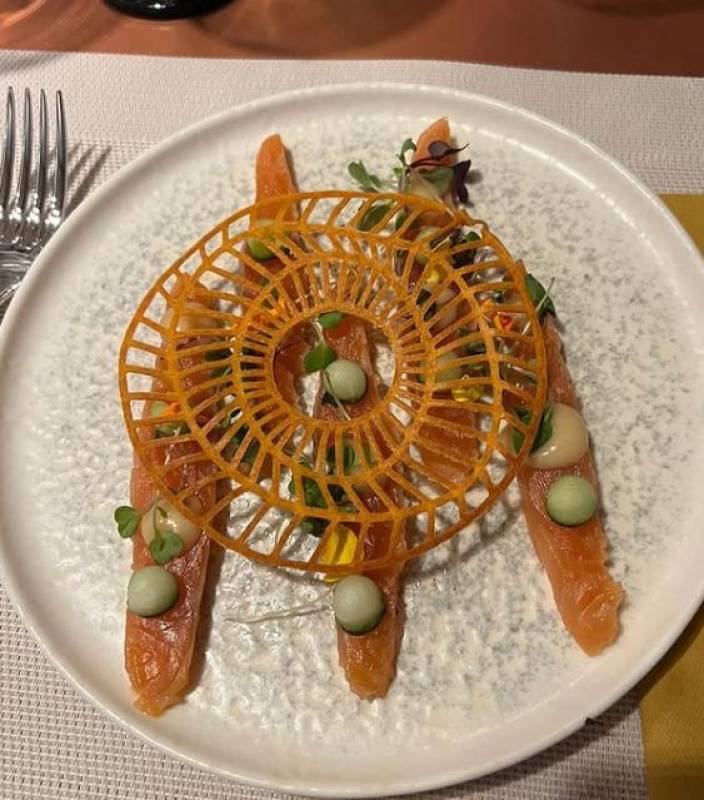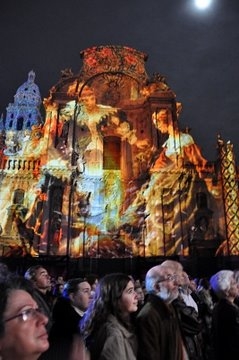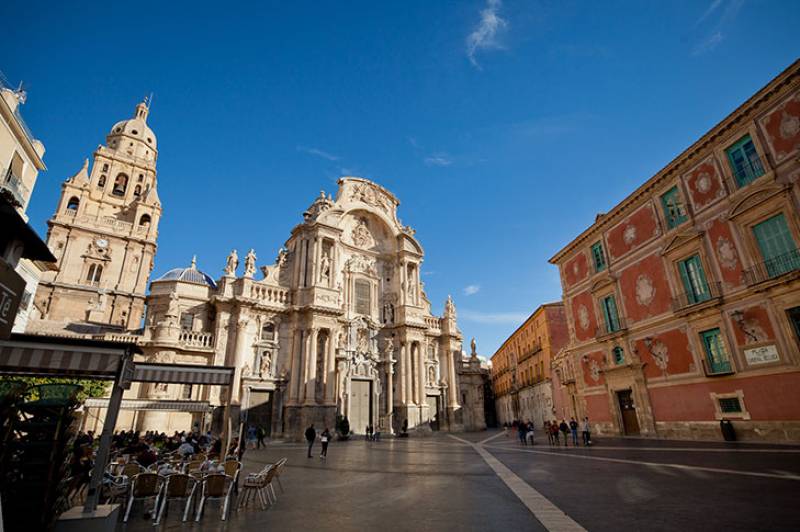- Region
- Águilas
- Alhama de Murcia
- Jumilla
- Lorca
- Los Alcázares
- Mazarrón
- San Javier
-
ALL AREAS & TOWNS
- AREAS
- SOUTH WEST
- MAR MENOR
- MURCIA CITY & CENTRAL
- NORTH & NORTH WEST
- TOWNS
- Abanilla
- Abarán
- Aguilas
- Alamillo
- Alcantarilla
- Aledo
- Alhama de Murcia
- Archena
- Balsicas
- Blanca
- Bolnuevo
- Bullas
- Cañadas del Romero
- Cabo de Palos
- Calasparra
- Camping Bolnuevo
- Campo De Ricote
- Camposol
- Canada De La Lena
- Caravaca de la Cruz
- Cartagena
- Cehegin
- Ceuti
- Cieza
- Condado de Alhama
- Corvera
- Costa Cálida
- Cuevas De Almanzora
- Cuevas de Reyllo
- El Carmoli
- El Mojon
- El Molino (Puerto Lumbreras)
- El Pareton / Cantareros
- El Raso
- El Valle Golf Resort
- Fortuna
- Fuente Alamo
- Hacienda del Alamo Golf Resort
- Hacienda Riquelme Golf Resort
- Isla Plana
- Islas Menores & Mar de Cristal
- Jumilla
- La Azohia
- La Charca
- La Manga Club
- La Manga del Mar Menor
- La Pinilla
- La Puebla
- La Torre
- La Torre Golf Resort
- La Unión
- Las Palas
- Las Ramblas
- Las Ramblas Golf
- Las Torres de Cotillas
- Leiva
- Librilla
- Lo Pagan
- Lo Santiago
- Lorca
- Lorquí
- Los Alcázares
- Los Balcones
- Los Belones
- Los Canovas
- Los Nietos
- Los Perez (Tallante)
- Los Urrutias
- Los Ventorrillos
- Mar De Cristal
- Mar Menor
- Mar Menor Golf Resort
- Mazarrón
- Mazarrón Country Club
- Molina de Segura
- Moratalla
- Mula
- Murcia City
- Murcia Property
- Pareton
- Peraleja Golf Resort
- Perin
- Pilar de la Horadada
- Pinar de Campoverde
- Pinoso
- Playa Honda
- Playa Honda / Playa Paraíso
- Pliego
- Portmán
- Pozo Estrecho
- Puerto de Mazarrón
- Puerto Lumbreras
- Puntas De Calnegre
- Region of Murcia
- Ricote
- Roda Golf Resort
- Roldan
- Roldan and Lo Ferro
- San Javier
- San Pedro del Pinatar
- Santiago de la Ribera
- Sierra Espuña
- Sucina
- Tallante
- Terrazas de la Torre Golf Resort
- Torre Pacheco
- Totana
- What's On Weekly Bulletin
- Yecla


- EDITIONS:
 Spanish News Today
Spanish News Today
 Alicante Today
Alicante Today
 Andalucia Today
Andalucia Today
article_detail
Francisco Salzillo y Alcaraz, Brief Biography
Francisco Salzillo, 1707-1783
Francisco Salzillo y Alcaraz, Born Murcia 12th May 1707 - 2nd March 1783
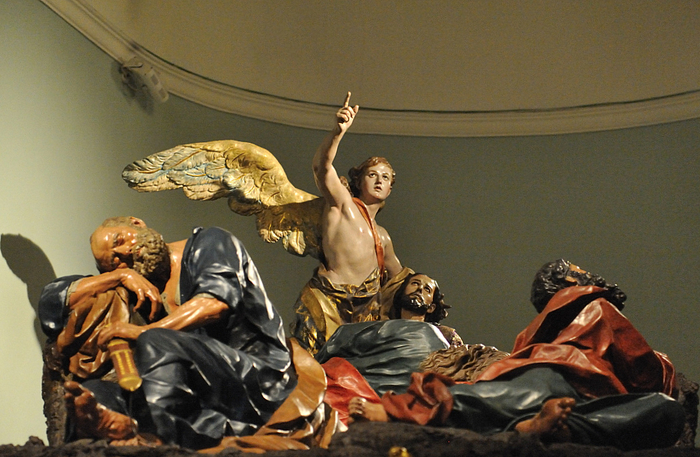
Francisco Salzillo was one of the greatest Spanish baroque sculptors, dedicated to producing religious works of the highest quality, renowned for his sensitive and powerful treatment of his subjects and the rippling movement of his pieces.
He spent all of his life in Murcia, a city which is passionately proud of his achievements and holds a museum 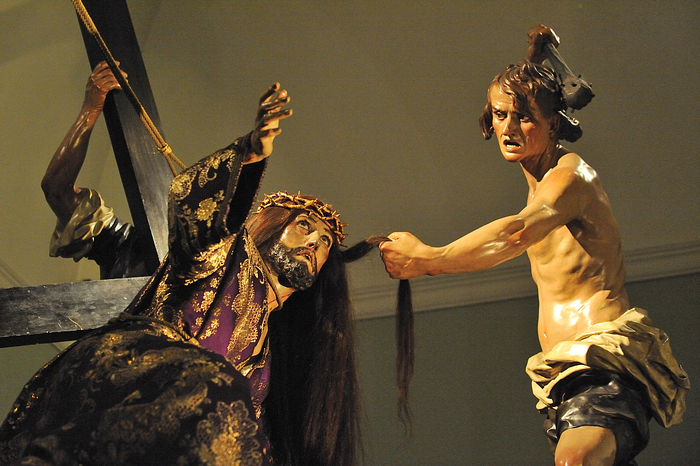 dedicated to his most characteristic and important works, the Museo Salzillo, including the Salzillo Belén and eight of the powerful and enigmatic pasos which are carried into the streets on the morning of Good Friday in the Semana Santa parade which has become known as the Procesión de los Salzillos.
dedicated to his most characteristic and important works, the Museo Salzillo, including the Salzillo Belén and eight of the powerful and enigmatic pasos which are carried into the streets on the morning of Good Friday in the Semana Santa parade which has become known as the Procesión de los Salzillos.
He was born in Murcia on 21st May 1707. His father, Nicolás Salzillo was an Italian sculptor, originally from Santa Maria Capua Vetere, and who had travelled to Murcia to work alongside Nicolás de Bussy, another great sculptural maestro, and although Nicolas Salzillo was undoubtedly a very competent sculptor is also considered to be a very "average" sculptor, demonstrating none of the brilliance shown by his more famous son.
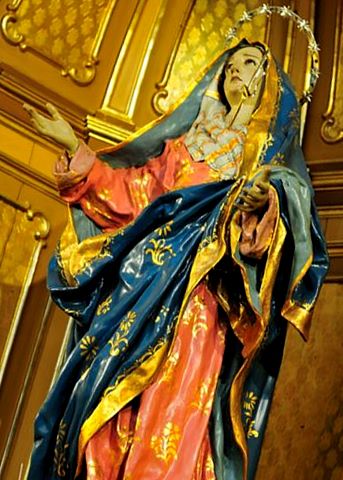 Francisco received a basic education from the Jesuits in the Colegio Jesuita de La Anunciata, where he was taught to draw by the cleric and painter Manuel Sánchez and it appeared he was destined for a religious life as he had entered the Orden Dominicana as a novice at 15, when his father suddenly died in 1727 and at the age of 20, and as the second of seven children, he was left to take over the family workshop.
Francisco received a basic education from the Jesuits in the Colegio Jesuita de La Anunciata, where he was taught to draw by the cleric and painter Manuel Sánchez and it appeared he was destined for a religious life as he had entered the Orden Dominicana as a novice at 15, when his father suddenly died in 1727 and at the age of 20, and as the second of seven children, he was left to take over the family workshop.
It is known that his younger brothers José Antonio (b 1710) and Patricio (b1722) both worked in the business, and Francisco took over existing clients, finding his early commissions in the establishments in which his father had previously worked .
In 1746 he married Juana Vallejo y Taibilla who bore him 2 children, Nicolás 1750-1751 and María Fulgencia.
 The quality of his work achieved almost immediate recognition, and although he was invited to go to Madrid and be presented at court by the influential Conde de Floridablanca, he stayed in Murcia, evidence only existing of one journey away from the city when he went to Cartagena to present the images of Los Cuatro Santos in 1755, figures which miraculously survived the carnage of the Spanish Civil War and are still in the Iglesia de Sta Maria de Gracia today, although he received a multitude of commissions from across the region and neighbouring provinces of Alicante, Albacete and Almeria.
The quality of his work achieved almost immediate recognition, and although he was invited to go to Madrid and be presented at court by the influential Conde de Floridablanca, he stayed in Murcia, evidence only existing of one journey away from the city when he went to Cartagena to present the images of Los Cuatro Santos in 1755, figures which miraculously survived the carnage of the Spanish Civil War and are still in the Iglesia de Sta Maria de Gracia today, although he received a multitude of commissions from across the region and neighbouring provinces of Alicante, Albacete and Almeria.
Following the death of his wife in 1763 he mixed more frequently with other artists and intellectuals, founding the Real Sociedad Económica de Amigos del País in 1777 and the Escuala Patriótica de Dibujo in 1778, of which he was the first director.
His success was marked by his appointment as "Escultor Oficial del Concejo de Murcia e inspector de pintura  y escultura" at which point he transferred his residence and workshop from the Barrio of san Andrés to Calle Vinadel.
y escultura" at which point he transferred his residence and workshop from the Barrio of san Andrés to Calle Vinadel.
He died on the 2nd March 1783 and was buried in the Convento de Capuchinas.
His development as an artist can be clearly seen in the works he produced, as his own personality and style emerged in the documented pieces which survived the terrible destruction of the Spanish Civil War (1936-1939) during which so many irreplaceable pieces were lost. Throughout the region there are pieces which bear his name to which no definitive attribute can be given, and many are attributed to Salzillo which bear definite influences of his work, but which in fact can only be attributed to "school of Salzillo" or in "the style of Salzillo."
Principal pieces in his development as an artist.
The early pieces completed for patrons of his fathers workshop are often found alongside his fathers work in Murcian churches and convents, but already show the subtle purity and attention to detail which make his 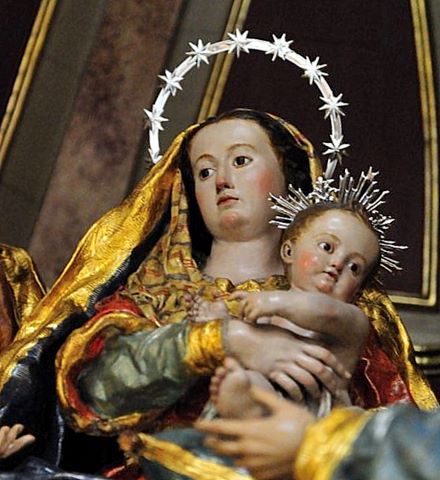 fathers pieces almost naíve in comparison. In the Parroquia of Santa Catalina for example, the Dolorosa by Francsico Salzillo, hands held aloft, eyes turned imploringly upwards, shows all the characteristics of the younger Salzillo, her sculpted robe and cloak flowing and liquid, expressive hands and delicate features contrasting with the almost disproportionate figure of his fathers Cristo de la Paciencia. Also of the same era is the Sagrada Familia in the Iglesia de San Miguel, a 5 figure piece which captures tangible human interaction and drama between the characters, the Holy Family all vying to hold the Baby Jesus in an intimate representation of family life.
fathers pieces almost naíve in comparison. In the Parroquia of Santa Catalina for example, the Dolorosa by Francsico Salzillo, hands held aloft, eyes turned imploringly upwards, shows all the characteristics of the younger Salzillo, her sculpted robe and cloak flowing and liquid, expressive hands and delicate features contrasting with the almost disproportionate figure of his fathers Cristo de la Paciencia. Also of the same era is the Sagrada Familia in the Iglesia de San Miguel, a 5 figure piece which captures tangible human interaction and drama between the characters, the Holy Family all vying to hold the Baby Jesus in an intimate representation of family life.
In his later works use of the estofada technique in which gold leaf was applied beneath the polichrome paint, then carefully rubbed away to reveal the gold below, give a real feel of motion and movement to the sculptures, created a feeling of natural movement and lifelike delicacy which can clearly be seen in images such as Francisco y Santa Clara in the Convento de Capuchinas
By this point his works are demonstrating distinctly Murcian characteristics, the faces assuming the well fed  aura of a Murcian huertana, many wearing Murcian costume, and some have plump, oval features which are uniquely Salzillo in their execution.
aura of a Murcian huertana, many wearing Murcian costume, and some have plump, oval features which are uniquely Salzillo in their execution.
By 1765 his workshop was in almost industrial production, and pieces from this stage of his work can be seen across the Region, notable works being the Virgen de las Angustias in Yecla and the Virgen de la Aurora in Aledo, although he also completed many commissions from neighbouring provinces during this period, pieces still surviving today in the Alicante province: Orihuela has a striking holy family in the Iglesia de Santiago.
At this point his most notable pupil was Roque Lopéz, who is known to have completed several important  pieces following the death of the sculptor, including the enigmatic patron saint of music Santa Cecilia in the Convento de Agustinas in Murcia close to the Salzillo museum, the sandaled feet attributed to Salzillo, (delivered the year of his death) whilst the body is believed to have been undertaken by Lopéz. Another noteworthy example is the belén which can still be seen in the Museo Salzillo today, López belived to have completed many of the figures. Lopéz himself went on to become a notable sculptor in his own right and his works can still be seen in many Murcian churches and monasteries.
pieces following the death of the sculptor, including the enigmatic patron saint of music Santa Cecilia in the Convento de Agustinas in Murcia close to the Salzillo museum, the sandaled feet attributed to Salzillo, (delivered the year of his death) whilst the body is believed to have been undertaken by Lopéz. Another noteworthy example is the belén which can still be seen in the Museo Salzillo today, López belived to have completed many of the figures. Lopéz himself went on to become a notable sculptor in his own right and his works can still be seen in many Murcian churches and monasteries.
During the latter part of his life some of the most powerful of his pieces were completed, several of them currently on show in the Salzillo musuem. These include the last supper, La Última Cena and the Prendimiento, currently on show in the Salzillo Museum which exude such a powerful dialogue between the 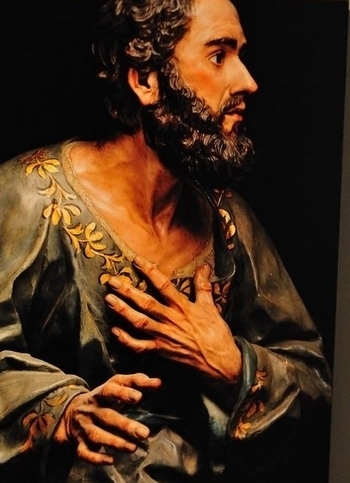 protagonists. These are part of the collection which still parades on Good Friday in the justifiably famous Procesión de los Salzillos during Semana Santa.
protagonists. These are part of the collection which still parades on Good Friday in the justifiably famous Procesión de los Salzillos during Semana Santa.
By 1770 his eyesight was failing and his health began to decline, most of the commissions from this time onwards being for outside of the region, and the figures lack the fineness and detail for which he had been renowned.
This is also visible within the Salzillo museum, the paso Azotes made in 1777 lacking the fine detail of earlier pieces. Its worth noting that in this piece those torutring Christ are wearing Murcian dress, a typical Salzillo characteristic.
He died in 1783.
A major collection of pieces by Salzillo can be seen in the Museo Salzillo in Murcia city: for further information, Click Salzillo Museum Murcia
Contact Murcia Today: Editorial 000 000 000 /
Office 000 000 000






